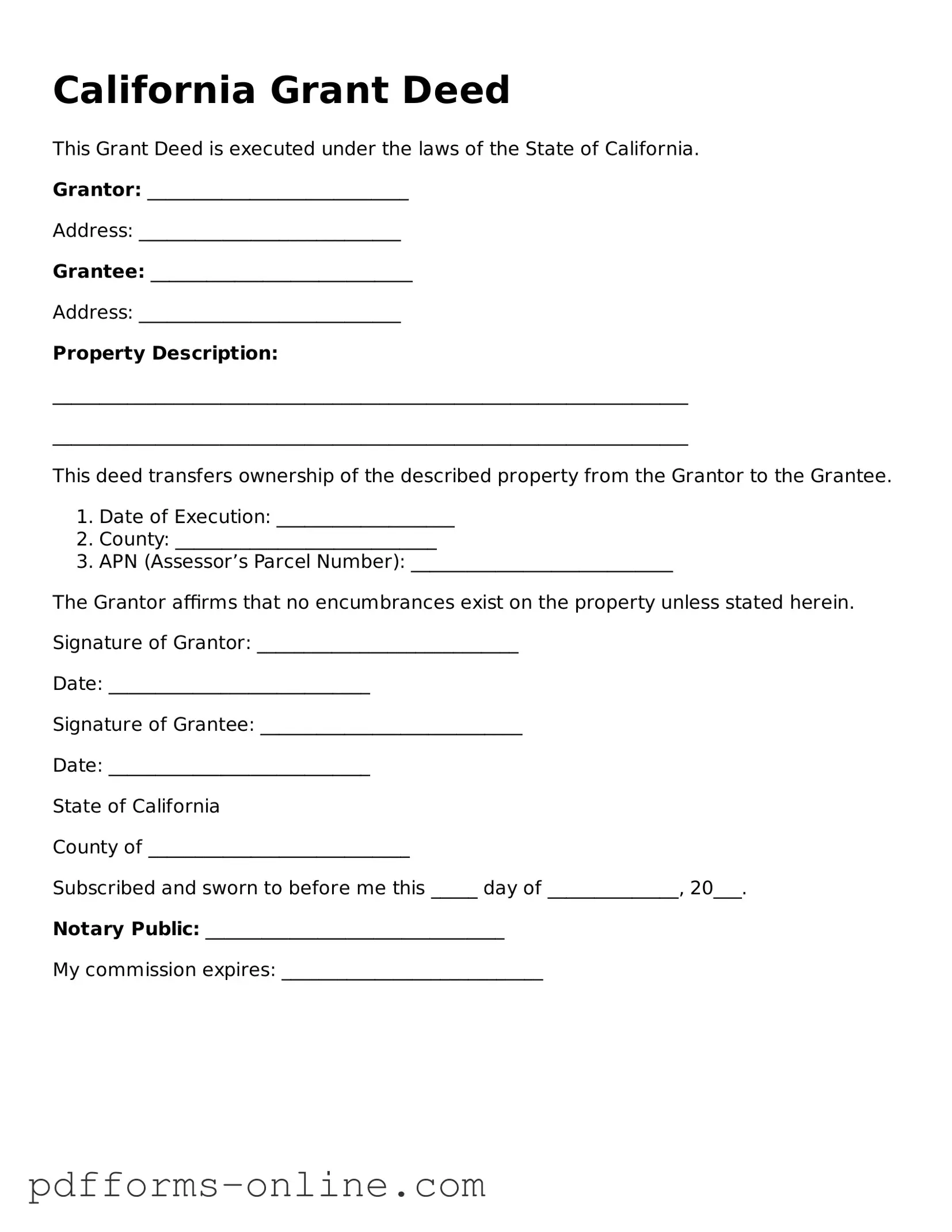California Grant Deed
This Grant Deed is executed under the laws of the State of California.
Grantor: ____________________________
Address: ____________________________
Grantee: ____________________________
Address: ____________________________
Property Description:
____________________________________________________________________
____________________________________________________________________
This deed transfers ownership of the described property from the Grantor to the Grantee.
- Date of Execution: ___________________
- County: ____________________________
- APN (Assessor’s Parcel Number): ____________________________
The Grantor affirms that no encumbrances exist on the property unless stated herein.
Signature of Grantor: ____________________________
Date: ____________________________
Signature of Grantee: ____________________________
Date: ____________________________
State of California
County of ____________________________
Subscribed and sworn to before me this _____ day of ______________, 20___.
Notary Public: ________________________________
My commission expires: ____________________________
